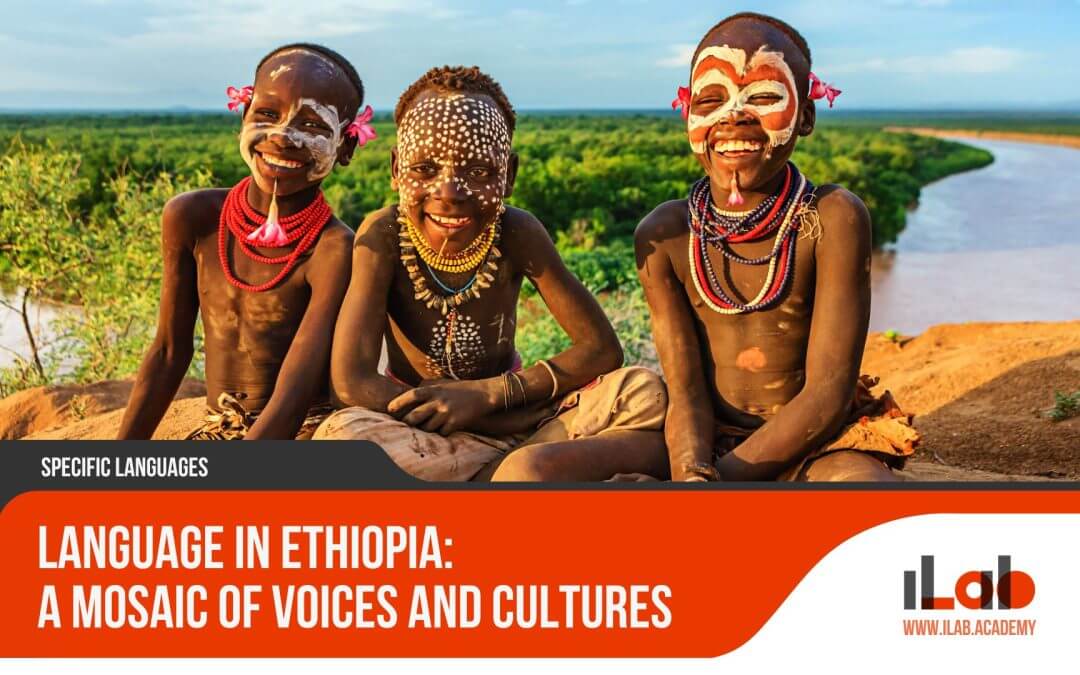Table of contents
The Aramaic language serves as a formidable testament to the endurance and adaptability of cultural expression, having threaded its way through the complex tapestry of human history. Its genesis in the ancient Near East set the stage for its ascent as a pivotal medium of communication across diverse empires, its script and vocabulary echoing through the ages. As a scholarly pursuit, the study of Aramaic not only enriches our understanding of linguistic evolution within the Semitic family but also illuminates the socio-political dynamics of ancient societies. The language’s tenacity, surviving in various forms into the modern era, poses intriguing questions about cultural transmission and the factors that contribute to the persistence of a language despite the relentless march of time. As we contemplate the intricate interplay between language and identity, the narrative of Aramaic invites us to consider the intricate layers of influence it has exerted—and continues to exert—in regions far beyond its initial cradle of civilization.
Key Takeaways
- Aramaic has a rich historical significance, being a major language in the Near East and having played a role in various empires and civilizations.
- Aramaic belongs to the Semitic language family and has linguistic features that differentiate it from other Semitic languages such as Hebrew and Arabic.
- Aramaic has had a profound cultural and religious impact, particularly within Jewish, Christian, and Gnostic traditions, influencing sacred texts and rituals.
- Over centuries, Aramaic has evolved and diverged into various dialects and languages in response to cultural and political shifts.
Origins and Historical Significance of Aramaic
Aramaic emerged over three thousand years ago, becoming a lingua franca of the Near East and playing a pivotal role in the administrative and cultural exchanges of several ancient empires. As a Semitic language, its roots are deeply intertwined with the history and evolution of the region’s civilizations. Its influence extended from the Levant across Mesopotamia, where it was adopted by various peoples and powers, notably the Neo-Assyrian, Neo-Babylonian, and Achaemenid empires.
The adoption of Aramaic as the official language of these empires, especially under the Achaemenids, facilitated the administration of a vast and diverse territory. It provided a cohesive medium for communication and record-keeping across a realm that spanned three continents. The versatility of Aramaic was not confined to the corridors of power; it also permeated daily life, trade, and the interchange of ideas and beliefs.
The historical significance of Aramaic is also marked by its longevity. Despite the eventual decline of these empires, Aramaic endured as a spoken and written medium. Its durability is a testament to its adaptability and the central role it played in the Near East. The language’s legacy is further cemented by its substantial corpus of inscriptions, official documents, and literature, providing scholars with valuable insights into the ancient world.
Understanding Aramaic’s origins and historical significance is essential for appreciating its role as a key player in the cultural and administrative narrative of the ancient Near East. Its profound impact on successive cultures underlines the importance of Aramaic in the broader context of world history.
Aramaic and Its Place in Semitic Languages
Within the tapestry of Semitic languages, Aramaic holds a distinguished position, sharing common linguistic features while showcasing its unique characteristics and historical connections to Hebrew, Arabic, and other related tongues. As a central branch of the Semitic family, Aramaic has played a pivotal role in the development of linguistic and cultural landscapes across the Near East.
Aramaic’s place within the Semitic languages is underscored by several key factors:
- Linguistic Affinity: Aramaic is closely related to Hebrew and shares many phonetic, morphological, and syntactical similarities with it. However, it also exhibits distinctions that have emerged over centuries of development.
- Geographic Spread: At its height, Aramaic enjoyed widespread use across various regions, influencing and being influenced by neighboring Semitic languages such as Phoenician and later, Syriac, an important Christian liturgical language.
- Script Influence: The Aramaic alphabet served as a forerunner to many writing systems, including the Hebrew and Arabic scripts, thus impacting the visual representation of several Semitic languages.
These aspects of Aramaic not only delineate its relationship with other Semitic languages but also reveal the dynamic interplay of linguistic evolution within this family. The language’s adaptation to diverse cultural settings demonstrates its flexibility and the ability to leave a lasting imprint on subsequent languages and dialects.
For an audience desirous of understanding, the significance of Aramaic extends beyond its own corpus. It provides a lens through which one can examine the broader phenomenon of language change and contact within the Semitic tradition, offering insights into the ancient conversations that shaped the linguistic tapestry of the Near East.
The Cultural and Religious Impact of Aramaic
The profound influence of Aramaic on religious heritage is particularly evident in its role as the language of seminal Jewish and Christian texts, as well as its presence in Gnostic scriptures. As the lingua franca of the Near East for many centuries, Aramaic served as a vehicle for religious thought and communication, with its script and vocabulary shaping the way sacred concepts were expressed and understood.
For Judaism, Aramaic holds a special place as the language of significant portions of the Talmud and Midrash—central texts for Jewish law and theology. The Targums, Aramaic translations of the Hebrew Bible, enabled the scriptures to be more accessible to those not fluent in Hebrew. These translations are more than mere linguistic transpositions; they embody interpretive layers, blending the original Hebrew with Aramaic cultural and theological nuances.
In Christianity, traces of Aramaic are found in the New Testament, reflecting the spoken language of Jesus and his early followers. Phrases such as “Talitha koum” and “Eli, Eli, lema sabachthani?” are direct Aramaic sayings preserved in the Gospels. The Peshitta, an early Syriac (Eastern Aramaic) translation of the Bible, is still revered in certain Christian traditions today, particularly within the Syriac Orthodox Church.
Furthermore, Gnostic texts, such as those found in the Nag Hammadi library, also contain Aramaic elements. These scriptures, which offer alternative Christian narratives and theological ideas, illustrate the diversity of early Christian thought, and how Aramaic served as a conduit for these esoteric teachings.
The cultural and religious impact of Aramaic is thus deeply embedded in the fabric of Abrahamic faiths, where it has not only conveyed sacred words but also shaped spiritual understanding throughout the ages.
The Evolution of Aramaic Over Centuries
Over millennia, the Aramaic language has undergone a complex process of diversification, giving rise to a spectrum of dialects influenced by the ebb and flow of empires, migrations, and cultural exchanges. Originally spoken by the Arameans, Aramaic became the lingua franca of several empires, including the Neo-Assyrian and Neo-Babylonian empires, and later the Achaemenid Empire. This widespread use facilitated its adoption and adaptation in various regions, leading to distinct dialects and even scripts.
The shifts in Aramaic’s prominence and form were shaped by several factors:
- Imperial Usage: Aramaic’s status as an administrative language under successive empires led to its standardization and dissemination.
- Religious Texts: Its role in sacred writings, most notably the Jewish Talmud and certain Christian texts, ensured its preservation and reverence.
- Cultural Assimilation: The influence of Greek, Persian, and Arabic language and culture during different periods introduced new vocabulary and syntax into Aramaic dialects.
Through the centuries, Aramaic not only diversified but also gave birth to new languages, such as Syriac, which became important in Christian liturgy and literature. The Islamic conquests and the subsequent Arabization of the Middle East led to a decline in Aramaic’s dominance, although it persisted in isolated Christian, Jewish, and Mandean communities. In these pockets, Aramaic continued to evolve independently, resulting in the modern dialects we encounter today.
Understanding the evolutionary journey of Aramaic is crucial for appreciating its historical significance and the rich tapestry of languages it has influenced. Despite its reduced number of speakers, Aramaic’s survival over such a vast expanse of time is a testament to its resilience and adaptability.
Aramaic Script and Its Influence on Writing Systems
Aramaic script, an ancient writing system, has left a lasting imprint on numerous alphabets across the Middle East and beyond, shaping the course of written communication. Originating in the ancient Near East, the Aramaic script was derived from Phoenician, an earlier Semitic writing system. Its convenience and adaptability allowed it to spread widely and become the lingua franca of several empires, including the Persian Empire.
The versatility of the Aramaic script is evidenced by its influence on a range of writing systems. It gave rise to the Hebrew and Arabic scripts, among others, becoming a pivotal element in the development of written traditions in these cultures. The Aramaic-derived scripts retained the consonantal nature of their predecessor but adapted characters to suit their own phonetic needs, leading to significant variations.
Moreover, the Aramaic script served as a template for the Brahmi script of India, which in turn influenced the development of scripts across South and Southeast Asia. This demonstrates the far-reaching impact of the Aramaic script beyond its immediate geographic confines.
The distinctive block-like form of Aramaic characters, with their elegant and simple strokes, facilitated the writing process on various materials, from stone to papyrus. This practicality ensured its continued use and adaptation over the centuries. The script’s legacy is not merely historical; it continues to be used in various forms by communities preserving Aramaic as a liturgical or spoken language.
As such, the Aramaic script is not only a historical artifact but a living bridge connecting the past to the present, its echoes resonating in the scripts and languages that have descended from it. Its study offers invaluable insights into the history of human communication and the unifying power of a shared writing system.
Modern Aramaic: Surviving Dialects and Speakers
Despite centuries of change and decline, Aramaic persists today, spoken in a tapestry of dialects by resilient communities scattered across the Middle East and the global diaspora. These dialects are not merely remnants of a bygone era but are living languages that continue to be a part of daily life, cultural practices, and religious rites. The modern speakers of Aramaic are predominantly found among certain ethnic groups, such as the Assyrians, Chaldeans, and Syriac Christians, who have maintained their ancestral tongue against all odds.
The current landscape of Aramaic is characterized by:
- Geographical dispersion: The speakers of modern Aramaic dialects are spread across countries such as Syria, Iraq, Iran, and Lebanon, with a significant number also residing in Western countries due to emigration.
- Linguistic diversity: The surviving dialects of Aramaic, including Assyrian Neo-Aramaic, Chaldean Neo-Aramaic, and Turoyo, reflect a rich linguistic diversity, each with its own unique phonological, morphological, and syntactic traits.
- Endangered status: Despite its historical significance, many Aramaic dialects are considered endangered, with UNESCO classifying some as “definitely endangered” or “severely endangered,” highlighting the urgent need for preservation efforts.
Aramaic’s resilience is a testament to the strength and dedication of its speakers. However, the challenges they face, such as displacement and assimilation pressures, are formidable. Only through concerted efforts in language preservation and education can the echoes of this ancient Semitic tradition continue to resonate in the modern world.
Efforts to Revitalize and Preserve Aramaic
Recognizing the endangered status of their linguistic heritage, communities and linguists alike have initiated multiple projects aimed at revitalizing and preserving the Aramaic language for future generations. These efforts include language courses, academic research, and the use of technology to engage younger speakers. The preservation of Aramaic is not only a cultural imperative but also a means to maintain a living link to a past that stretches back thousands of years.
To give a clearer view of the initiatives underway, the following table outlines several key efforts:
| Initiative Type | Description |
|---|---|
| Educational Programs | Establishment of classes and curricula in regions with Aramaic-speaking communities. |
| Digital Resources | Development of online platforms, mobile apps, and digital dictionaries for Aramaic. |
| Scholarly Work | Research projects and publications dedicated to documenting dialects and creating linguistic resources. |
| Community Engagement | Cultural festivals and events that promote Aramaic language and traditions. |
| Media Representation | Production of media content like films, music, and literature in Aramaic to raise awareness and interest. |
These initiatives face significant challenges, such as limited funding, the dispersal of Aramaic-speaking communities, and the dominance of other languages in formal and informal settings. However, the dedication of those involved in the revitalization efforts gives hope for the future of the Aramaic language. By combining traditional methods with innovative technology, they aim to create a sustainable environment where Aramaic can thrive once more, honoring its historical importance and ensuring its continued relevance.
The Role of Technology in Sustaining Aramaic Language
In the digital era, innovative technologies have become pivotal in the preservation and revitalization of the Aramaic language, offering unprecedented opportunities for documentation and education. As the speakers of this ancient tongue become increasingly scarce, technology steps in to bridge the gap between the past and present. Digital platforms and software not only serve to record the valuable linguistic data but also facilitate the language learning for new generations around the globe.
The role of technology in sustaining the Aramaic language can be understood through several key applications:
- Digital Archives and Databases: By creating comprehensive digital repositories, researchers are able to preserve texts, audio recordings, and video documentation of native speakers. These archives ensure that the linguistic nuances of Aramaic and its dialects are not lost to time.
- Language Learning Applications: Apps and online courses have emerged as vital tools for teaching Aramaic. They offer interactive and user-friendly interfaces that engage users in the language learning process, making it more accessible and appealing, especially to the youth.
- Online Communities and Social Media: The internet has enabled the creation of virtual spaces where Aramaic speakers and enthusiasts can connect, share, and collaborate. These platforms are instrumental in fostering a sense of community and keeping the language in active use, even among the diaspora.
These technological interventions are crucial in ensuring that the Aramaic language continues to be a living language, not just a subject of academic study. They represent a modern-day approach to safeguarding a linguistic heritage that has shaped human civilization for millennia.
Aramaic in Popular Culture and Media
Aramaic, though ancient, occasionally permeates modern popular culture and media, bringing a glimpse of its linguistic heritage to a broader audience. Despite its antiquity, Aramaic has found avenues into contemporary times, capturing the imagination and curiosity of people worldwide. One of the most significant instances of Aramaic in recent media is its use in cinematic works, where filmmakers have employed the language to add authenticity to their narratives, particularly those set in historical or biblical contexts.
To engage our readers further, consider the following table highlighting notable uses of Aramaic in popular culture:
| Medium | Example | Impact on Audience |
|---|---|---|
| Film | “The Passion of the Christ” | Immersive experience of biblical events |
| Television | “A.D. The Bible Continues” | Enhanced historical authenticity |
| Literature | “The Christ Clone Trilogy” | Fictional exploration of religious themes |
Each instance serves to not only entertain but also to educate and spark interest in the Aramaic language and its historical significance. The use of Aramaic in these media has the dual effect of preserving the language by bringing it into the public eye and offering a channel for cultural transmission. While the audience may not fully understand the language, the context in which it is presented often allows for an intuitive grasp of its importance and beauty.
The allure of Aramaic in popular culture lies in its ability to connect the present to a distant past. Through these glimpses into its melodic and scriptural resonance, Aramaic continues to maintain a place in the collective consciousness, serving as a reminder of the vast tapestry of human communication and cultural expression.
The Future Outlook for Aramaic Language
As we turn our gaze to the horizon, the future of the Aramaic language teeters between the hope of revitalization and the threat of extinction. This ancient tongue, once the lingua franca of empires, now clings to relevance within a handful of communities and through the diligent efforts of scholars and enthusiasts. The pathways to its survival are varied and challenging, but not without potential.
The prospect of Aramaic’s continuity can be illuminated by considering several pivotal factors:
- Community Engagement: The commitment of native speakers to pass the language to the next generation is crucial. Community-driven educational programs, cultural events, and everyday conversational use can maintain the language’s vibrancy.
- Academic and Institutional Support: Universities and linguistic organizations can play a significant role in documenting dialects, offering courses, and conducting research, thereby contributing to the scholarly understanding and preservation of Aramaic.
- Technology and Media: In the digital age, innovative tools such as mobile apps, online platforms, and interactive media can help in teaching the language, connecting dispersed speakers, and raising global awareness.
For those who desire understanding, it’s essential to recognize that these efforts are not just about preserving a communication tool; they are about safeguarding a rich cultural heritage. Each word in Aramaic is a testament to a historical narrative that has shaped civilizations. While the language’s survival hangs in a delicate balance, the concerted efforts of dedicated communities and the leveraging of modern technology provide a beacon of hope. It is through these means that the whispers of Aramaic may yet echo into the future.
Frequently Asked Questions
How Does the Phonology of Aramaic Differ From That of Modern Hebrew or Arabic?
Aramaic phonology differs from modern Hebrew and Arabic in several aspects. It has unique consonantal sounds not found in the other languages and historically had emphatic consonants that have evolved differently. Vowel systems also vary, with Aramaic having a simpler array. Over time, phonological shifts in regional dialects have further distinguished Aramaic phonetically from its Semitic counterparts. These differences reflect the language’s distinct evolutionary path and geographical dispersion.
Can Linguistic Analysis of Aramaic Provide Insights Into the Socio-Economic Conditions of Its Speakers Throughout History?
Linguistic analysis of Aramaic can indeed reveal socio-economic conditions of historical speakers. By examining linguistic variations, scholars infer societal hierarchies, trade relations, and cultural exchanges. Changes in Aramaic over time reflect shifts in power and influence, offering a window into the lives of its users. Such analysis contributes significantly to understanding the dynamics of ancient Near Eastern civilizations and their interactions.
Are There Any Notable Works of Contemporary Literature Written Entirely in Aramaic?
Contemporary literature in Aramaic is quite scarce due to its limited use as a vernacular. However, there are some notable exceptions, such as the poetry and short stories by Israeli writer and poet, Gabriel Mandel Khan. His works stand out as rare modern instances of Aramaic literature, offering a glimpse into the language’s enduring expressive potential, although they represent a niche contribution to the broader literary landscape.
How Has the Diaspora of Aramaic-Speaking Communities Affected the Transmission and Teaching of the Language to New Generations?
The diaspora of Aramaic-speaking communities has fragmented the transmission of the language, complicating its teaching to new generations. Dispersion often leads to reduced linguistic cohesion, necessitating targeted efforts for language preservation. Consequently, initiatives such as cultural programs, educational resources, and technology are being leveraged to maintain Aramaic, ensuring that despite geographic dispersal, the language’s legacy and instructional continuity are upheld for future speakers.
What Role Does Aramaic Play in the Identity and Cultural Heritage of Its Speakers in the 21st Century?
Aramaic holds a vital role in the identity and cultural heritage of its contemporary speakers, encapsulating a rich historical legacy. In the 21st century, it continues to be a cornerstone of religious and communal life for certain Middle Eastern ethnic groups. Despite its diminished prevalence, Aramaic remains a symbol of resilience and tradition, with efforts underway to preserve its use as a living language within these communities.
Conclusion
In conclusion, Aramaic endures as a vital link to ancient civilizations, reflecting the dynamic interplay of language, culture, and religion. Its legacy, preserved through sacred texts and linguistic influence, continues to resonate in contemporary society. Efforts to revitalize and sustain Aramaic, supported by technological advances and popular media, offer hope for its future. As a testament to human resilience and adaptability, Aramaic remains a significant subject of scholarly interest and cultural reverence.














